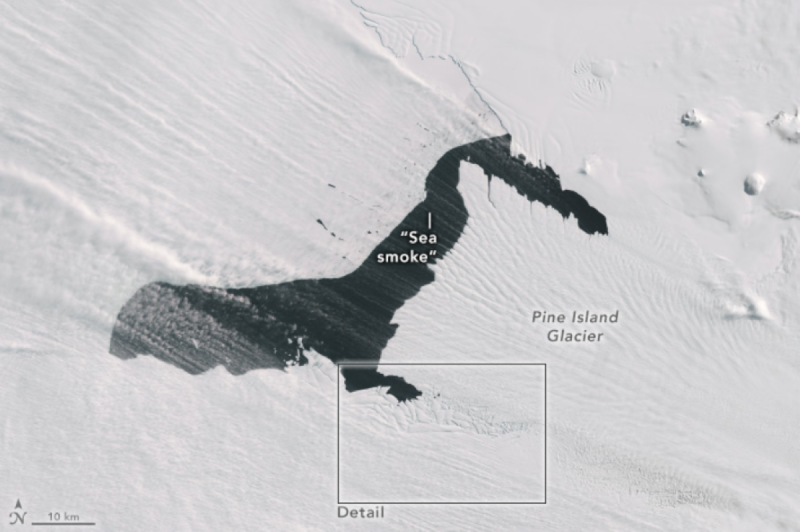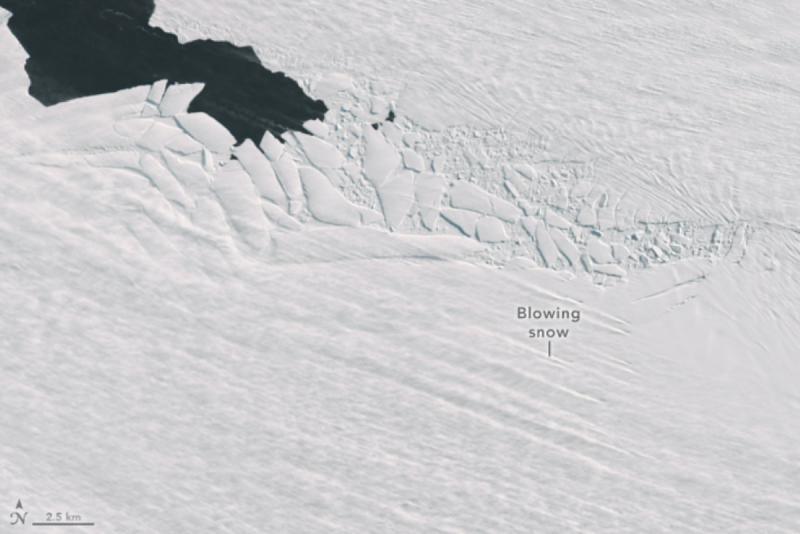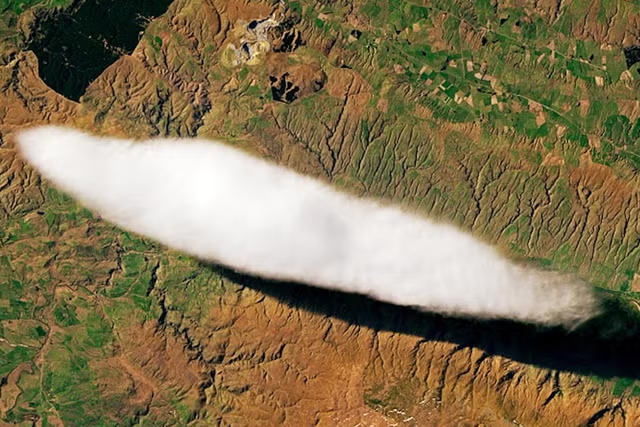In a rare satellite capture, NASA's Landsat 8 satellite has documented an extraordinary atmospheric phenomenon above Antarctica's Pine Island Glacier, where ghostly plumes of "sea smoke" rise from one of the continent's most crucial and vulnerable ice masses.
The remarkable images, taken on October 10, 2024, showcase an unusual clear-sky view of two atmospheric phenomena: sea smoke forming at the glacier's edge and snow streams whipped up by powerful katabatic winds racing from Antarctica's interior toward the coast.
The images are a unique opportunity to observe these near-surface atmospheric phenomena, which are typically obscured by cloud cover, Christopher Shuman, a glaciologist at NASA's Goddard Space Flight Center and the University of Maryland, Baltimore County, said in a statement. It illustrates "the power of the wind," he said.
Drag slider compare photos


Sea smoke, a phenomenon akin to steam rising from a hot cup of coffee on a cold morning, forms through an interaction between ice, water and air. As winds push water and sea ice away from the glacier's front, warmer water wells up from below.
When this relatively warm water meets the frigid Antarctic air, it creates a dramatic condensation effect, forming small ice crystals that appear as ghostly plumes rising from the water's surface.
Pine Island Glacier, along with its neighbor Thwaites Glacier, serves as a critical pathway for ice flow from the West Antarctic Ice Sheet into the Amundsen Sea. The glacier has gained notoriety in recent years for its rapid retreat, regularly calving icebergs so massive they require official names.
The satellite imagery also reveals streams of white snow being carried across the landscape by powerful springtime winds. These snow streams are particularly visible near the glacier's southern edge, where they originate from a chaotic shear zone of fractured ice.
"One really shouldn't be surprised to see winds coming out of the interior with all the cold winter air that's been isolated there for months," Shuman said. These katabatic winds, created when dense, cold air flows downslope toward the coast, are a signature feature of Antarctic climate.
While these wind-driven phenomena create spectacular imagery, they also highlight important scientific questions about Antarctica's changing climate. Scientists are particularly interested in understanding how blowing snow affects the surface mass balance of polar ice sheets.
Despite the significance of this process, researchers face considerable challenges in gathering comprehensive data due to the remote location and harsh conditions of these sites.
Do you have a tip on a science story that Newsweek should be covering? Do you have a question about glaciers? Let us know via science@newsweek.com.
Disclaimer: The copyright of this article belongs to the original author. Reposting this article is solely for the purpose of information dissemination and does not constitute any investment advice. If there is any infringement, please contact us immediately. We will make corrections or deletions as necessary. Thank you.



